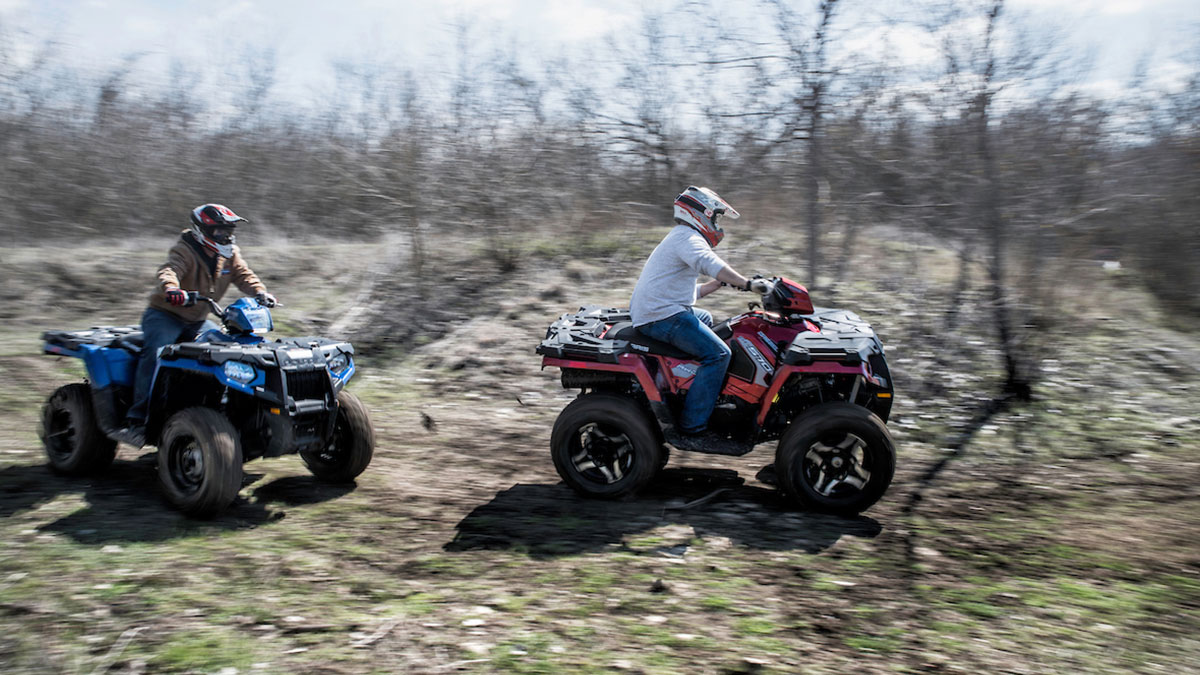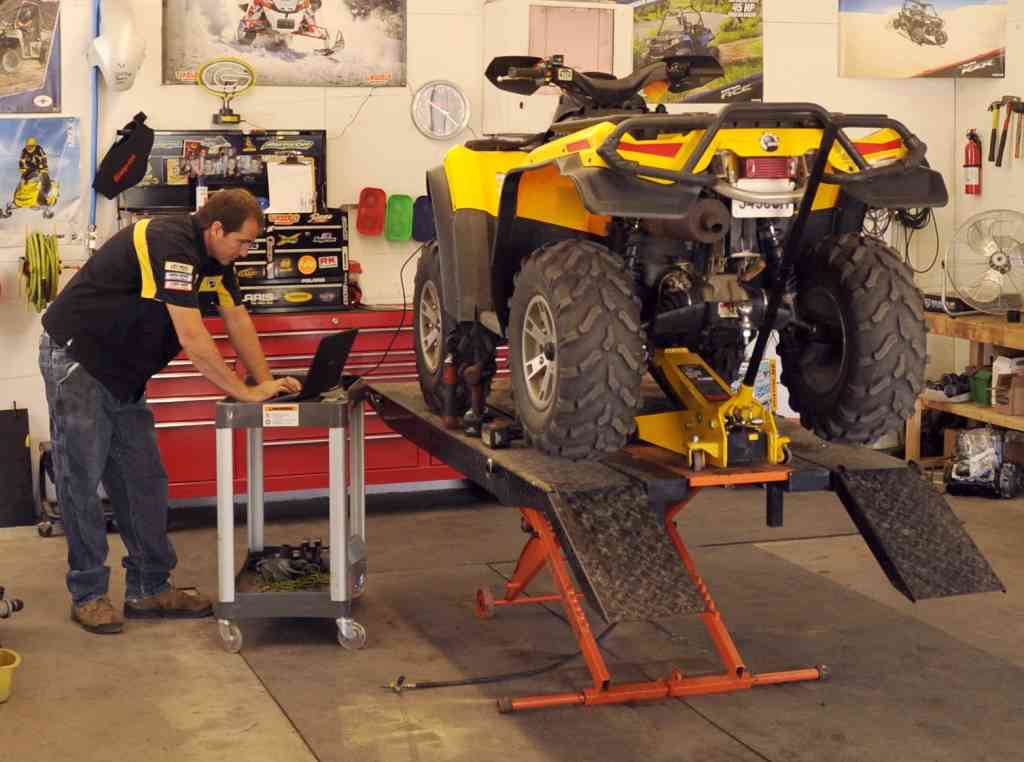Release Your Thrill-Seeking Spirit: ATV Riding Fundamentals for every single Fanatic
Wiki Article
ATV Riding Methods: Understanding the Art of Off-Roading

Body Positioning
To efficiently navigate via difficult off-road surface, it is essential for ATV cyclists to regularly keep proper body placing. Keeping the appropriate body placement while riding an ATV not only improves control and security however also makes sure the rider's security. By taking on the correct body positioning strategies, riders can successfully disperse their weight, improve their balance, and lessen the threat of mishaps or injuries.One key element of appropriate body placing is keeping the feet on the foot pegs. Putting the feet on the foot secures enables the motorcyclist to keep security and control over the ATV. The cyclist's knees need to be slightly curved, giving a slight suspension to maintain and soak up shocks equilibrium. Additionally, the rider's upper body should remain unwinded and flexible, permitting smooth and fast motions when essential. This consists of maintaining a light grasp on the handlebars to keep control without extreme pressure.
Moreover, the biker's eyes should constantly be concentrated in advance, scanning the terrain and preparing for any kind of barriers or modifications in the route. By preserving an ahead gaze, bikers can make split-second decisions and react properly to testing terrain.
Throttle Control
Building upon the relevance of correct body positioning for ATV riders, understanding throttle control is a critical ability that enables cyclists to efficiently maneuver via different off-road surfaces. Throttle control refers to the capacity to control the amount of power supplied to the ATV's engine. By recognizing exactly how to control the throttle, motorcyclists can guarantee a smooth and controlled velocity, enabling them to browse challenges with accuracy.Unexpected or jerky activities can trigger the ATV to shed traction or come to be unstable, making it tough to keep control. This method enables the ATV to keep a steady rate and offers better grip, lowering the threat of accidents.
In addition to smooth modulation, motorcyclists have to also learn just how to stabilize the throttle with various other riding methods, such as body positioning and stopping. For example, when climbing steep hills, riders need to apply enough throttle to maintain momentum without triggering or overpowering the atv wheel spin. When coming down high slopes, bikers should use the throttle in combination with correct body braking and placing to preserve control and avoid the ATV from sliding or tipping over.

Braking Techniques
An essential facet of ATV riding methods is grasping effective stopping methods. It is crucial to keep in mind that harsh braking with just the front brake can create the ATV to pitch forward, potentially leading to loss additional reading of control or also flipping over. By mastering these braking techniques, you can enhance your ATV riding skills and guarantee a secure and enjoyable off-roading experience.Cornering Methods
One important facet of mastering ATV riding techniques is recognizing reliable cornering methods. Collaring on an ATV Home Page can be tough, but with the best strategies, cyclists can navigate turns safely and effectively. The secret to successful cornering is to maintain control of the ATV while taking full advantage of traction and lessening the risk of toppling.To execute a correct cornering technique, bikers must approach the turn at a suitable speed, guaranteeing they are not going too quick or as well slow-moving. It is critical to shift the body weight towards the within the turn, leaning into it to maintain balance and security. This assists for the centrifugal force and maintains the ATV upright.
Furthermore, riders ought to maintain their eyes focused on the leave point of the turn as opposed to the immediate course in advance (ATV). This enables smoother and more precise steering, as it helps the rider anticipate any challenges or modifications in terrain
Additionally, appropriate throttle control plays a considerable function in cornering. Motorcyclists need to modulate the throttle smoothly, preventing unexpected velocities or slowdowns, which can trigger loss of control.
Uphill and Downhill Riding
When navigating off-road surface, ATV motorcyclists have to understand the strategies for uphill and downhill riding to preserve control and make certain safety and security. Uphill riding calls for a combination of balance, throttle control, and weight distribution. As riders rose high inclines, they ought to lean forward to shift their weight towards the front of the ATV, which increases grip on the front wheels and protects against the automobile from flipping backward. ATV. In addition, keeping a regular throttle and staying clear of abrupt velocity or deceleration helps to avoid the ATV from losing energy see page or obtaining stuck. Downhill riding, on the various other hand, needs riders to lean back and shift their weight towards the rear of the ATV. This aids to maintain stability and avoid the car from flipping forward. It is critical to make use of the brakes sparingly and use them progressively to avoid locking the wheels and shedding control. Furthermore, motorcyclists need to choose the path with the least challenges, as browsing downhill can be much more tough because of the raised speed and reduced traction. By mastering the methods for uphill and downhill riding, ATV cyclists can confidently take on different off-road surfaces and delight in a exhilarating and secure adventure.Verdict
To conclude, mastering the art of ATV riding requires a combination of body positioning, throttle control, braking methods, and efficient cornering. Uphill and downhill riding additionally require particular skills to browse securely. By applying these strategies, cyclists can enhance their off-roading experience and improve their overall control and safety on the ATV.ATV Riding Techniques: Grasping the Art of Off-Roading is a comprehensive guide that digs right into the details of mastering the skills needed for off-road ATV riding. Whether you are a newbie or an experienced biker, ATV Riding Techniques: Grasping the Art of Off-Roading supplies indispensable guidance to aid boost your off-road ATV riding skills to the next degree.

Report this wiki page